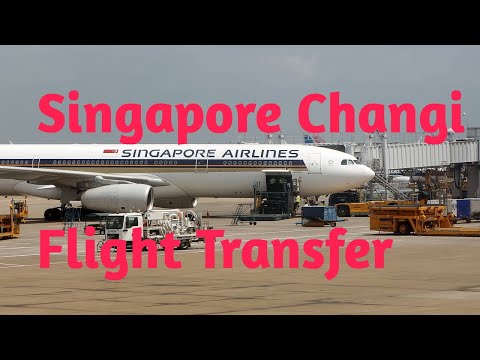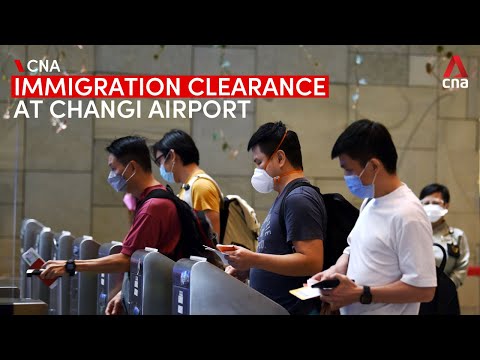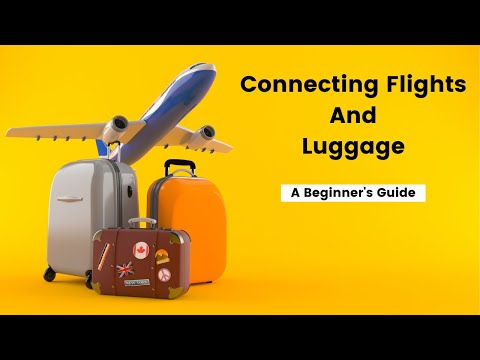Is 1 Hour Transit Time Enough in Singapore? Expert Analysis and Insights
If you’re planning a trip with a layover at Singapore Changi Airport, you might be wondering if a one-hour transit time is enough. The airport is known for its efficiency and top-class amenities, but is it possible to make a connection in such a short amount of time?

According to several sources, a one-hour layover at Changi Airport is likely sufficient, especially if both flights are on the same ticket. Singapore Airlines, the airport’s main carrier, is known for taking care of its passengers and helping them with any issues that may arise during their transit. Additionally, Changi Airport is extremely efficient, and passengers don’t need to go through customs or immigration for a transfer.
However, some experts recommend a longer layover time for a more comfortable experience and to fully enjoy the amenities at Changi Airport. If you’re transferring to Terminal 4, it’s best to arrive a bit earlier, and a layover of 3-4 hours is recommended for a comfortable experience. Ultimately, the decision is up to you and depends on your preferences and travel plans.
Understanding Transit Time
Transiting through an airport can be a stressful experience, especially if you have a tight connection time. If you are wondering whether 1 hour transit time is enough at Singapore Changi Airport, there are several factors to consider.
Firstly, it depends on whether your flights are on the same ticket or not. If you have booked your entire journey on a single ticket, you may have a better chance of making the connection as the airline will take care of you in case of any delays or cancellations. However, if you have separate tickets, you may need to go through immigration and customs, which can take longer.
Another factor to consider is the terminal you are arriving at and departing from. If both your flights arrive and depart from Terminal 1, 2, or 3, then you should give yourself a minimum of 1 hour for an efficient transfer. However, if you are arriving or departing from Terminal 4, you may need to allow for additional time as it is further away from the other terminals and requires a shuttle bus transfer.
It is also important to note that Singapore Changi Airport is known for its efficiency and ease of navigation. The airport has won numerous awards for its facilities and services, including Best Airport in the World by Skytrax for several consecutive years. This means that you can expect a smooth and hassle-free transit experience, with plenty of amenities and services to keep you comfortable during your wait.
Overall, 1 hour transit time at Singapore Changi Airport can be sufficient if your flights are on the same ticket and you are arriving and departing from Terminal 1, 2, or 3. However, it is always recommended to allow for additional time in case of any unexpected delays or issues.
Singapore Changi Airport Overview
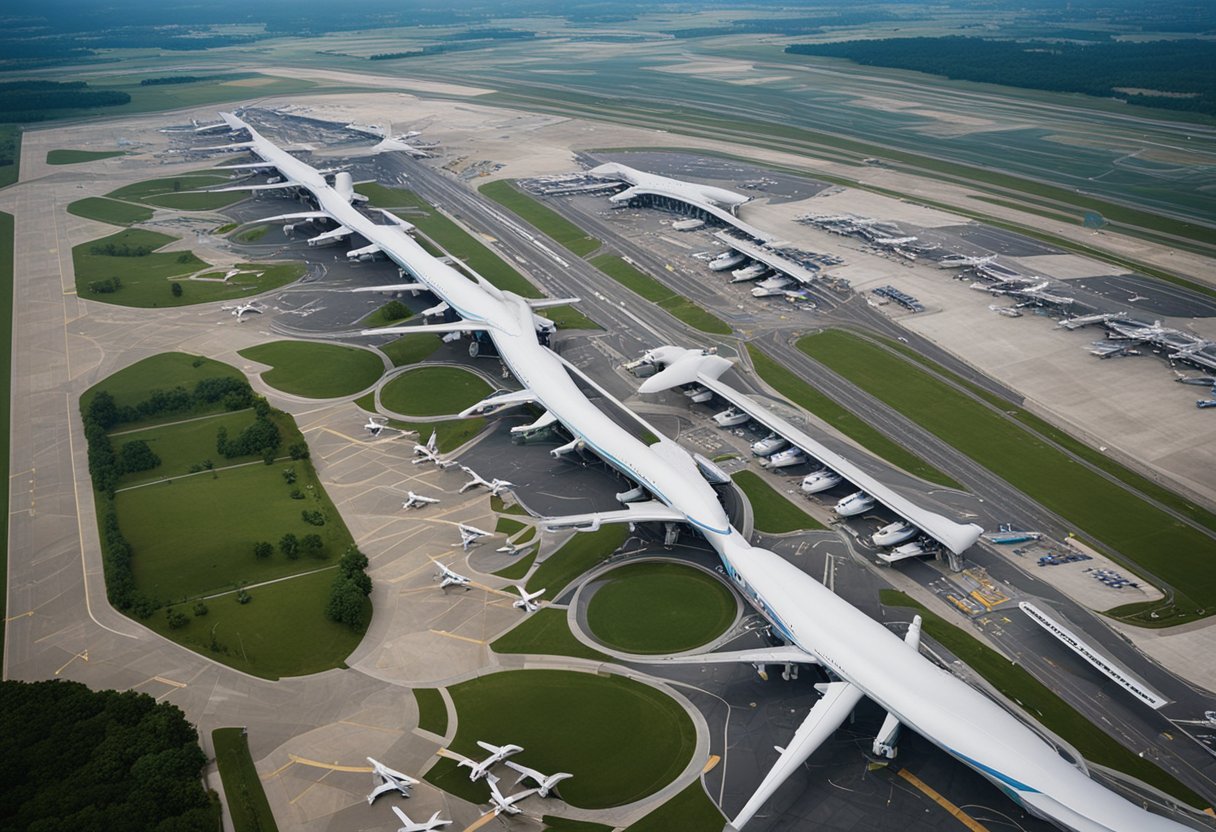
If you’re planning a trip with a layover at Singapore Changi Airport, you’re in for a treat. This airport is consistently ranked as one of the best in the world, and for good reason. With world-class amenities, efficient operations, and a wide range of dining and shopping options, you’re sure to have a comfortable and enjoyable layover experience.
Changi Airport is the primary airport serving Singapore and is one of the busiest airports in Southeast Asia. It is located approximately 20 kilometers northeast of the city center and is easily accessible by public transportation, taxi, or private car.
The airport has four terminals, with Terminal 1, 2, and 3 serving most airlines, including Singapore Airlines. Terminal 4 is used mainly by budget airlines. If you’re transiting through Changi, you’ll want to make sure you know which terminal your flights arrive and depart from.
One of the highlights of Changi Airport is its wide range of amenities. From gardens and art installations to movie theaters and swimming pools, there’s something for everyone. You can even take a free city tour if you have a layover of at least 5.5 hours.
Overall, Changi Airport is a world-class facility that offers a comfortable and enjoyable experience for travelers. With efficient operations, a wide range of amenities, and easy accessibility to the city center, it’s no wonder why it’s consistently ranked as one of the best airports in the world.
Navigating Through Changi
When transiting through Singapore’s Changi Airport, it’s important to know the layout of the airport and how to navigate it efficiently. With a transit time of just one hour, every minute counts, so it’s essential to know where you’re going and what you need to do.
Firstly, upon arrival at Changi, follow the signs for “Transit” and proceed to the Transfer Desk to obtain your boarding pass for your connecting flight, if you haven’t already. Make sure to check the departure gate and boarding time for your next flight, as this information may have changed since you last checked.
Next, proceed through security screening, which is typically quick and efficient at Changi. Once you’ve cleared security, check the departure board for your gate number and proceed to the gate area.
It’s worth noting that Changi Airport is quite large and has multiple terminals, so if your connecting flight is departing from a different terminal, you’ll need to take the Skytrain or shuttle bus to get there. Allow extra time for this, as it can take up to 20 minutes to travel between terminals.
If you have time to spare, Changi Airport offers a wide range of amenities and facilities to help you pass the time. From lounges and spas to shopping and dining, there’s something for everyone at Changi.
In summary, with just one hour to transit through Changi Airport, it’s important to be efficient and know where you’re going. Follow the signs for “Transit,” obtain your boarding pass, clear security, check your departure gate, and make your way to the gate area. If your connecting flight is departing from a different terminal, allow extra time to travel between terminals.
Immigration and Customs Process
If you are transiting through Singapore, you will need to go through immigration and customs. The process is generally straightforward and efficient, but it is important to be aware of the requirements and procedures to ensure a smooth transit.
Firstly, all passengers are required to submit the electronic Health Declaration Card (eHDC) via the SG Arrival Card (SGAC) e-Service before clearing immigration. This applies to Singapore Citizens, Permanent Residents, Long-term Pass Holders, and Foreign Visitors.
When you arrive at Singapore Changi Airport, follow the signs to the immigration area. You will need to present your passport and boarding pass for your onward flight. If you are a citizen of the US or India, you may require a visa to transit through Singapore. Check the requirements before you travel to avoid any issues.
After clearing immigration, you will need to collect your luggage and go through customs. If you have nothing to declare, proceed to the green channel. If you have goods to declare, proceed to the red channel and declare them to the customs officer.
If you have a short transit time of one hour, it is important to be efficient and organized during the immigration and customs process. However, Singapore Changi Airport is known for its efficiency and is designed to handle transit passengers with ease. If you are flying with Singapore Airlines and on a single ticket, they will take care of you if your transit time is not sufficient.
Overall, the immigration and customs process at Singapore Changi Airport is generally straightforward and efficient. As long as you have the necessary documents and follow the procedures, you should have no issues transiting through Singapore.
Security Measures at Changi
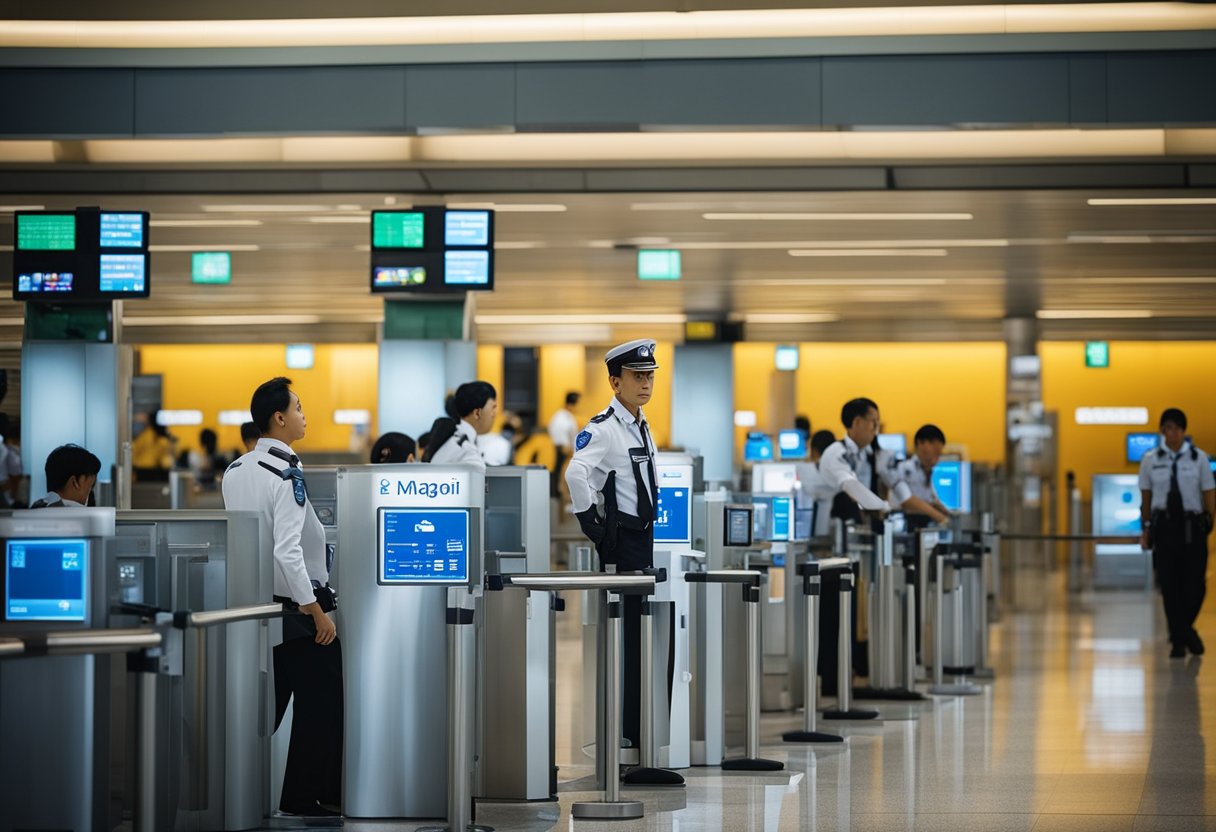
Changi Airport is known for its strict security measures, which have been implemented to ensure the safety of all passengers and staff. The airport has won numerous awards for its security, including the “World’s Best Airport Security” award at the Skytrax World Airport Awards.
When you arrive at Changi Airport, you will need to go through security screening before entering the departure area. This includes a baggage screening and a body scan. All liquids, aerosols, and gels must be placed in a clear plastic bag and presented separately for screening.
In addition to the standard security measures, Changi Airport also uses advanced technology to enhance security. This includes the use of biometric technology for identity verification and the use of X-ray machines and explosive detection systems for baggage screening.
Once you have cleared security, you can proceed to your departure gate. It is important to note that security is performed at the gate for all departing flights, so you will not need to clear security again if you are transferring between terminals.
Overall, Changi Airport’s security measures are designed to ensure a safe and secure travel experience for all passengers. By following the airport’s guidelines and cooperating with security personnel, you can help ensure a smooth and stress-free journey.
Dealing with Flight Delays
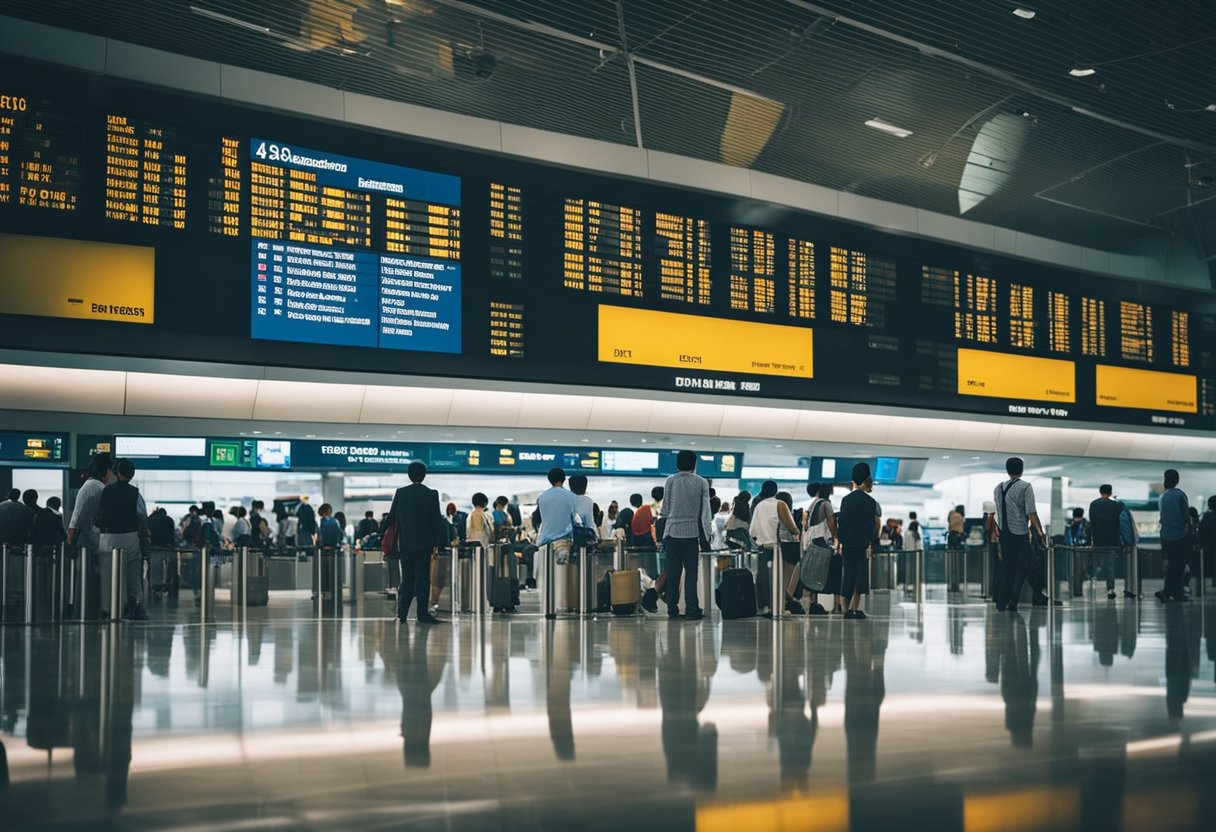
If your flight is delayed and you have a tight connection in Singapore, don’t panic. Singapore Changi Airport is known for its efficiency and excellent facilities, so you should be able to make your connecting flight even if your first flight is delayed by an hour or so.
If you are worried about missing your connecting flight, speak to a member of staff from your airline as soon as possible. They will be able to advise you on your options and help you make alternative arrangements if necessary. Singapore Airlines, for example, will take care of you if you miss your connecting flight, as long as both flights are on the same ticket.
If your flight is delayed and you have a long layover in Singapore, there are plenty of things to do at the airport to pass the time. Changi Airport has a wide range of shops, restaurants, and entertainment options, so you can easily spend a few hours exploring the airport.
If your flight is delayed for an extended period, you may be entitled to compensation under certain circumstances. However, the rules around flight delays and compensation can be complex, so it’s important to check with your airline to find out what your rights are.
In summary, if your flight is delayed and you have a tight connection in Singapore, don’t panic. Speak to a member of staff from your airline as soon as possible, and if you have a long layover, take advantage of the airport’s excellent facilities. And remember, if your flight is delayed for an extended period, you may be entitled to compensation, so it’s important to check with your airline to find out what your rights are.
Connecting Flights and Tickets
When it comes to transit time at Singapore Changi Airport, it is important to understand the different types of connections and tickets.
Same Ticket Connections
If you have a connecting flight with the same ticket, meaning both flights are operated by the same airline or partner airlines, then a transit time of one hour is usually enough. This is because you do not have to go through immigration, baggage claim, or customs. Simply follow the signs to your next gate and you should have plenty of time to make your connection.
Single Ticket Connections
On the other hand, if you have a single ticket connection with different airlines, or if you have purchased separate tickets for each leg of your journey, then it is recommended to have a transit time of at least two hours. This is because you will need to go through immigration, collect your baggage, and check in again for your next flight.
It is important to note that some airlines may offer shorter connection times, such as 1.25 hours, but this can be risky as any delay could cause you to miss your connection. It is always better to have some extra time in case of unexpected delays or long queues at immigration.
In summary, if you have a same ticket connection, one hour transit time should be enough, but for single ticket connections, it is best to allow at least two hours. Always check with your airline for their recommended connection times and plan accordingly to ensure a stress-free journey.
Layovers in Singapore
If you have a layover in Singapore and are wondering if one hour is enough time to make a connecting flight, it is important to consider a few factors. Singapore Changi Airport is known for its efficiency and ease of navigation, but transit times can vary depending on a number of factors.
First, it is important to check if your flights are on the same ticket or not. If they are on the same ticket, your bags will be checked through to your final destination, and you will not need to go through customs or immigration. This means that a one-hour layover may be sufficient, but it is always best to check with your airline.
If your flights are on different tickets, you will need to collect your bags and go through customs and immigration before checking in for your next flight. This can add significant time to your transit, and it is recommended to allow at least three hours for this process.
When transiting through Changi Airport, Singapore Airlines offers a complimentary shuttle bus service between terminals. The frequency of the buses is high, so it is easy to transfer between terminals quickly. However, it is still important to allow enough time to get from one terminal to another.
If you have a longer layover in Singapore, there are plenty of amenities to enjoy at Changi Airport. From lounges to gardens to shopping and dining, there is something for everyone. If you need to store your bags during your layover, there are storage options available at the airport for a flat rate fee.
Overall, while a one-hour layover may be sufficient for transit through Changi Airport, it is always best to check with your airline and allow enough time for potential delays or unexpected circumstances.
Efficiency of Changi Airport
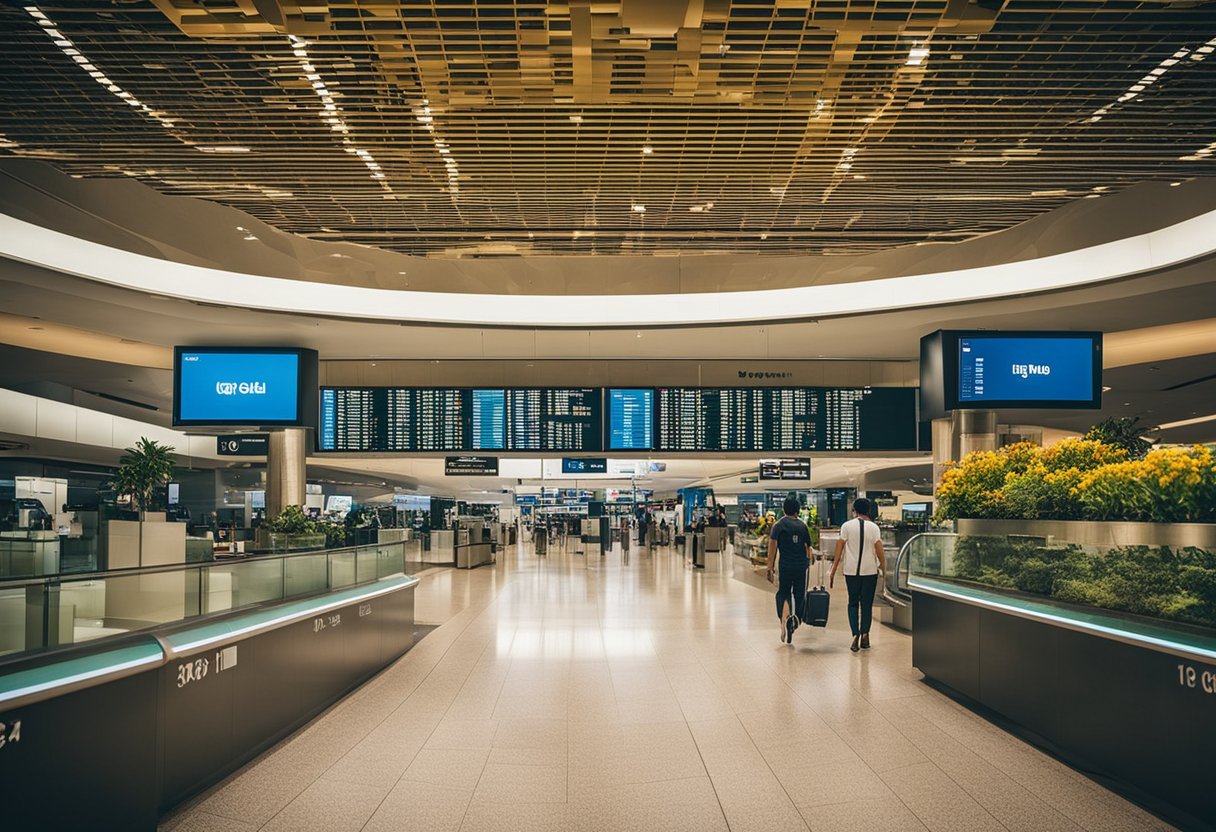
Changi Airport is known for its efficiency and has been voted the World’s Best Airport for several years. The airport has a reputation for being clean, well-organized, and easy to navigate.
One of the factors that contribute to the airport’s efficiency is the fast and seamless transit process. If you have a layover of one hour at Changi Airport, you can rest assured that it is enough time to make your connecting flight.
The airport has an efficient transit system that allows passengers to move between terminals quickly. The Skytrain, which is a free shuttle service, runs every few minutes and can take you from one terminal to another in just a few minutes.
In addition to the fast transit system, Changi Airport has a well-designed layout that makes it easy for passengers to navigate. The airport has clear signage, and the staff are friendly and knowledgeable, which makes it easy to get the information you need.
Overall, Changi Airport’s efficiency is one of the reasons why it is so popular among travelers. The airport’s fast transit system, well-designed layout, and friendly staff make it easy to navigate and ensure that travelers can make their connecting flights with ease.
Passenger Experience at Changi
If you are a passenger with a layover of 1 hour at Changi airport, you may wonder what to expect during your transit. The good news is that Changi is known for its efficiency and excellent facilities, so you can expect a smooth experience.
When you arrive at Changi, you should follow the signs to your connecting flight’s terminal. If you have a boarding pass for your next flight, you can proceed directly to the gate. However, if you need to collect your boarding pass, you should head to the transfer counters, where the staff will assist you.
Changi airport offers plenty of amenities to make your transit comfortable and enjoyable. You can find a variety of shops, restaurants, and lounges to suit your needs and preferences. If you have time, you can also explore the airport’s attractions, such as the butterfly garden, the rooftop pool, or the movie theater.
In terms of timing, one hour should be sufficient for most connecting flights at Changi, especially if you are on a single ticket and do not need to go through customs or immigration. However, if you have any concerns or unexpected delays, you can always seek assistance from the airport staff or your airline’s customer service.
Overall, if you are a passenger with a 1-hour transit time at Changi, you can expect a hassle-free and pleasant experience. Just make sure to follow the signs, check your boarding pass and flight status, and take advantage of the airport’s amenities.
Frequently Asked Questions
How long does it take to clear immigration at Singapore airport?
The immigration process at Singapore airport is generally very efficient, with most passengers clearing immigration within 10-15 minutes. However, during peak travel periods, such as holidays and weekends, wait times may be longer.
What is the minimum layover time required for self-transfer in Singapore?
If you are self-transferring between flights at Singapore airport, it is recommended that you have a minimum layover time of 3 hours to ensure you have enough time to clear immigration, collect your baggage, check-in for your next flight, and go through security.
What is the distance between Terminal 0 and Terminal 3 in Singapore?
There is no Terminal 0 at Singapore airport. The distance between Terminal 1 and Terminal 3 is approximately 2.5 kilometers. There is a free shuttle bus that runs between the terminals, which takes about 10-15 minutes.
Is 1 hour enough time for duty-free shopping at Changi Airport?
If you have a layover of 1 hour at Changi Airport, it is unlikely that you will have enough time for duty-free shopping. However, if you have a longer layover, Changi Airport has a wide range of shops and restaurants to explore.
How long does it take to get from one terminal to another at Singapore airport?
The time it takes to get from one terminal to another at Singapore airport depends on the mode of transportation you choose. If you take the free shuttle bus, it takes about 10-15 minutes. If you walk, it can take up to 30 minutes.
Is a 50-minute layover enough time for a Singapore Airlines flight?
If you have a 50-minute layover for a Singapore Airlines flight, it is recommended that you check with the airline to ensure you have enough time to make your connecting flight. While it is possible to make a connecting flight in 50 minutes, it can be stressful and may not allow enough time for unexpected delays or issues.

